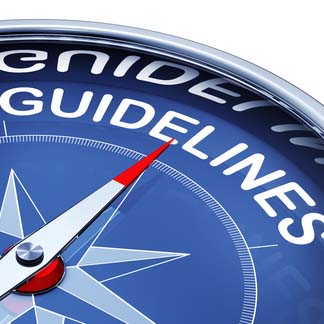Painful diabetic neuropathy (PDN) is a highly prevalent condition that greatly affects quality of life. The American Academy of Neurology (AAN) has issued an update of its practice guideline on oral and topical treatments for PDN, published in the December 27, 2021, online issue of Neurology.1 The new guideline updates the previous one published in 2011.
To update the guideline, the authors conducted a systematic search of the literature from January 2008 to April 2020, followed by a structured review process to classify the evidence and develop practice recommendations using the AAN 2017 Clinical Practice Guideline Process Manual.
TREATMENTS
The recommended drugs and topical treatments listed in the guideline for treatment of PDN usually do not eliminate pain, but they have been shown to reduce pain. Complete resolution of symptoms is often not achieved, the guideline notes. Patients often expect a high degree of pain relief, or complete resolution. It is important that clinicians align patients’ expectations with the expected efficacy of interventions (approximately 30% pain reduction is considered a success in clinical trials). Clinicians should counsel patients that the goal of therapy is to reduce, and not necessarily to eliminate, pain.
The guideline states that there are many treatment options for PDN, so a treatment plan can be tailored specifically to each person living with this condition. There are many oral and topical medications that are effective in reducing nerve pain. The guideline concludes that four classes of oral medications have demonstrated evidence of pain reduction in meta-analyses:
- Gabapentinoids (gabapentin or pregabalin)
- Serotonin norepinephrine reuptake inhibitors (SNRIs) (duloxetine, venlafaxine, or desvenlafaxine)
- Tricyclic antidepressants (TCAs) (amitriptyline, nortriptyline, and imipramine)
- Sodium channel blockers (carbamazepine, oxcarbazepine, lamotrigine, or lacosamide)
The best estimates of the effect sizes and the corresponding statistical confidence intervals are comparable for all of these drug classes, the guideline states, which makes recommendations for one over another difficult.
Studies on sodium channel blockers published since the last guideline was created have resulted in this class of drugs now being recommended and considered as effective at providing pain relief as the other drug classes recommended in this guideline, said Brian Callaghan, MD, MS, of the University of Michigan in Ann Arbor, guideline co-author.
The guidelines stress that opioids should not be considered for treatment. “Current evidence suggests that the risks of the use of opioids for painful diabetic neuropathy therapy outweigh the benefits, so they should not be prescribed,” Dr. Callaghan said. Clinicians should not use tramadol (Ultram) or tapentadol (Nucynta) (opioids/SNRI dual-mechanism agents) for the treatment of PDN. Clinicians should consider offering patients currently using these drugs a safe taper and nonopioid treatment options.
The guidance also states that clinicians should not prescribe valproic acid (Depakene) for patients with childbearing potential and not prescribe it for other patients unless multiple other drugs have failed.
Clinicians are advised to try medications from another class if patients don’t experience meaningful improvement or have significant adverse effects with their first treatment.
Clinicians can offer topical, nontraditional, or nonpharmacologic interventions if patients prefer. Some studies have supported the use of topical treatments such as capsaicin, glyceryl trinitrate spray, or Citrullus colocynthis to reduce pain; Ginkgo biloba and nonpharmacologic treatments, including exercise, mindfulness, cognitive behavior therapy, or tai chi, can also be helpful.
STEPS
The first step for clinicians is to assess all patients with diabetes for PDN. When deciding on which medication to prescribe, providers should consider the cost of a drug, possible side effects, as well as any concurrent mood or sleep problems. Some treatments for painful neuropathy may also have beneficial effects on mood and sleep (eg, TCAs and SNRIs) and therefore may produce some of their benefits through these pathways.
If a patient is identified with PDN, clinicians should also assess them for concurrent mood and sleep disorders. Patients with PDN should be offered treatment with TCAs, SNRIs, gabapentinoids, and/or sodium channel blockers to reduce pain.
Once the patient is taking the prescribed medication, they should be checked to determine if there is enough pain relief or too many side effects. If the first medication tried does not provide meaningful improvement, or if there are significant side effects, the guideline states that providers should offer patients a trial of another medication from a different class.
For patients who achieve partial improvement with an initial therapeutic class, clinicians should offer a trial of a medication from a different effective class or combination therapy by adding a medication from a different effective class.
To assist practitioners treating painful diabetic neuropathy, the AAN has also published a new AAN Polyneuropathy Quality Measurement Set to accompany the guideline to improve the ways that care is delivered to patients




